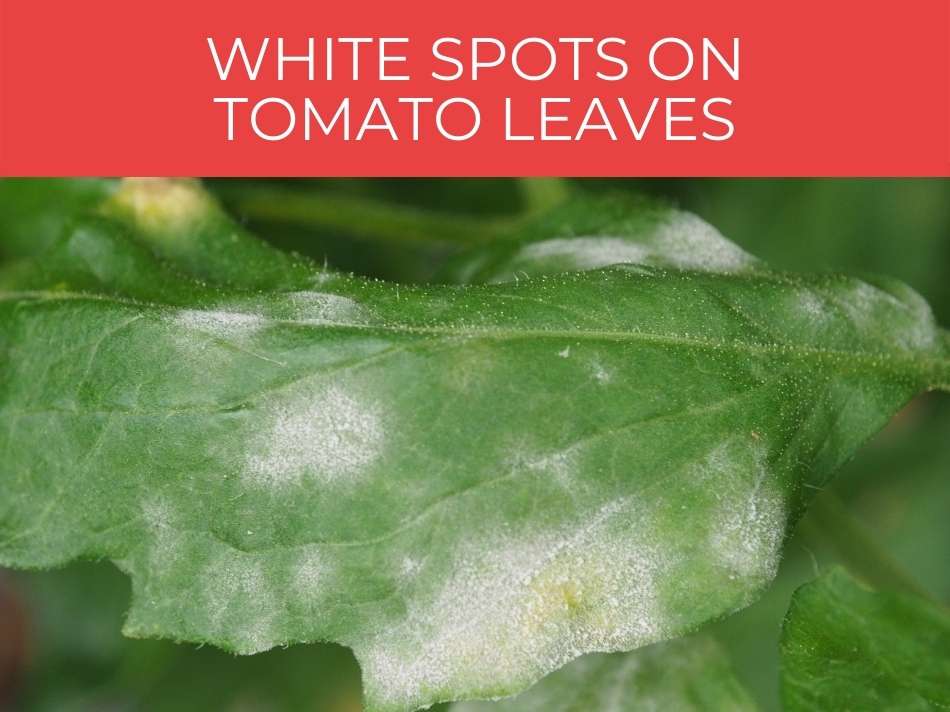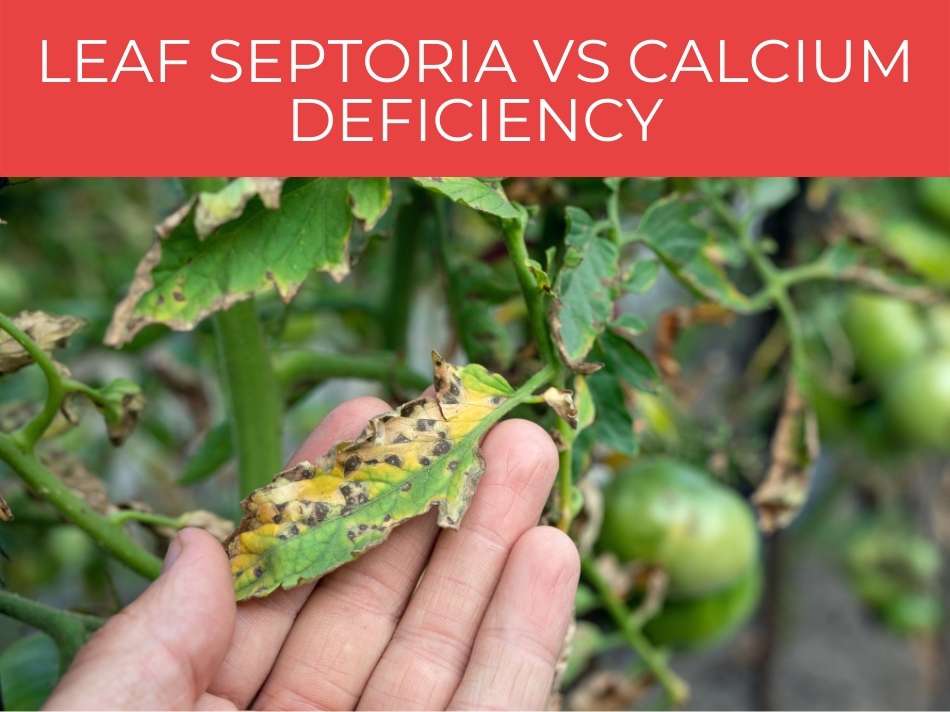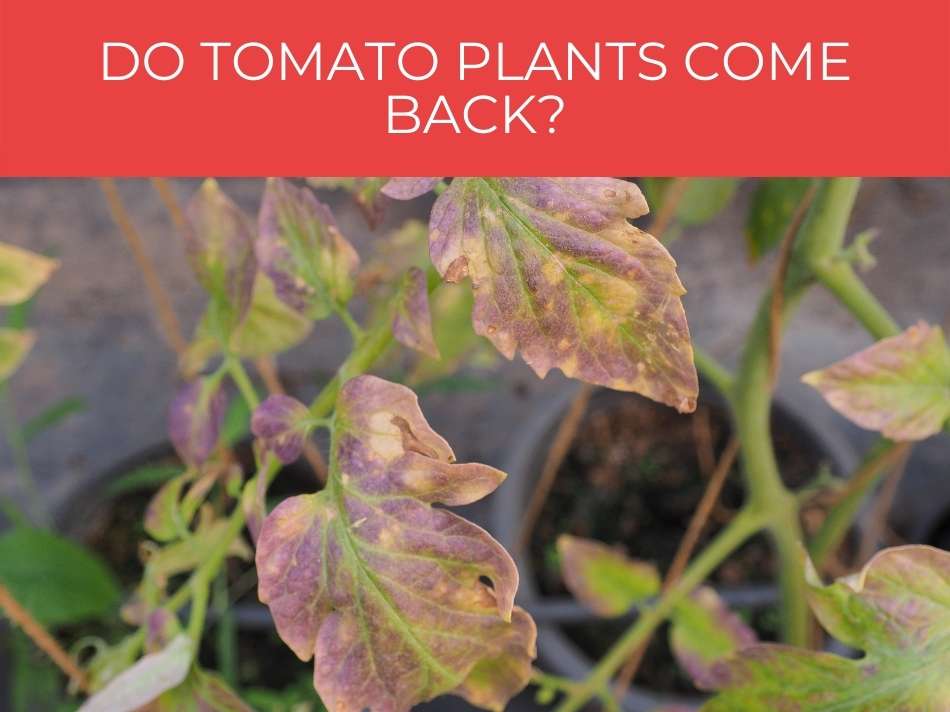Don’t panic if you notice white spots on the leaves of your tomato plant. They can be treated and won’t necessarily destroy the plant.
The white spots on tomato leaves are usually caused by a fungal or bacterial infection. These are not necessarily destructive and can be treated quite effectively. One of the best ways to prevent the spread of the disease and white spots is to remove all the affected leaves and destroy them.
Here, we explore what causes the white spots on the leaves of tomato plants and how to get rid of them.

White spots on tomato leaves
White spots on the leaves of tomato plants can be caused by a mold that results in powdery mildew, which won’t necessarily destroy the plant. Other fungal infections, such as Septoria or blight can also cause similar leaf spots.
One of the causes of white spots on tomato plants is a fungus called powdery mildew.
The white spots can be seen on both the underside and top of the leaves.
It is rare that powdery mildew will cause permanent damage to the tomato plant.
However, it can cause the plant to be vulnerable to other diseases.
It can also remove important nutrients from the plant and the leaves can die and fall from the plant.
Other causes of white spots on tomato leaves include other fungi, such as Septoria or early blight.
These diseases are more destructive for the plant than powdery mildew is.
See our complete guide to growing more tomatoes.

How do you get rid of white spots on tomato plants?
Fungicides can be used to get rid of white spots on the leaves of tomato plants, which can also be washed with neem oil. If the disease causing the white spots is not too far gone, the affected leaves can be removed and destroyed.
The best way to get rid of the actual white spots on your tomato plant is to remove the affected leaves.
The plants should be disposed of far away from the healthy plants that remain.
This means that the mold fungus will be destroyed by the next growing season.
If the white spots are caused by another fungus, such as Septoria, it is possible to spray the plant with a fungicide.
You can also wash the plant thoroughly with neem oil, which is a gentler alternative.
To prevent the growth of the mildew and the white spots, make sure the plant is in a dry, sunny area.
The fungi that cause the mildew can develop in humid conditions.

Tomato plants need a lot of sun, but also need space and air between them, so this can help to avoid the white spots developing.
See our guide for how far apart to plant tomatoes.

Why do my tomato leaves have white spots?
A tomato plant can develop white spots on the leaves due to a bacterial or fungal infection. These can be treated with a chemical or organic fungicide. If the spots are caused by mildew, they can be washed off the leaves quite effectively.
If your tomato plant has white spots, it is likely that it has been affected by a disease.
This may be either bacterial or a form of a fungus.
The most common diseases are Septoria leaf spot, early blight, and bacterial spot.
Septoria is a potentially destructive disease, which can be treated with a fungicide.
Early blight does not only affect the leaves but can also be seen on the stems and fruit.
It presents as white spots on the leaves, which can turn yellow and die.
Another cause of white spots on the leaves of tomato plants could be powdery mildew.
This is a less-destructive disease that can be washed off.

White mold
The white mold that develops on the leaves of tomato plants is caused by a fungus. The leaves are covered with a white powder that prevents some sunlight from being absorbed by the plant. A fungicide can be used to treat this mildew.
White mold on the leaves of a tomato plant is also called powdery mildew and is caused by a fungus.
White mold, or mildew, covers the leaves of the plant and blocks some sunlight necessary for photosynthesis.
Getting rid of white mold on a tomato plant can be as simple as washing the leaves with neem oil.
Don’t use this method in very high temperatures and preferably only after two weeks if you have used a chemical fungicide on the plant.
See our guide to getting rid of mold in a greenhouse.

Leaf Septoria vs calcium deficiency
Leaf Septoria is a fungus that affects a tomato plant and causes white spots to develop on the leaves. Calcium deficiency is the lack of the mineral in the plant’s intake of nutrients. It can also cause white spots to develop on the leaves of the tomato plant.
You can recognize leaf Septoria on your tomato plant by the characteristic tiny black dots that develop into paler dots, with a dark margin.
If your tomato plant develops Septoria and you catch it early enough, you must remove all the diseased leaves.
This should contain the spread of the fungus.
It is also important to remove the airflow around the plants.
It is also possible to treat Septoria with a fungicide, that is administered in the form of a spray on the plant.
You can recognize calcium deficiency in a tomato plant by the spots on the leaves, similar to this symptom of Septoria.
However, the spots associated with calcium deficiency are darker than those associated with Septoria.
A calcium deficiency also results in the leaves curling and developing burnt tips.

How do you treat tomato leaf spots?
Most tomato leaf spots can be treated with a fungicide, although others can be cleared by washing the leaves. An effective way to treat the spots is to remove the affected leaves and to make sure they are thoroughly destroyed.
Some leaf spots on tomato leaves can be treated with fungicides.
If the plant is affected, one of the best treatments for tomato leaf spots is to remove the affected leaves.
You can destroy the leaves by burning them, or burying them, possibly in the compost.
This will keep the spores contained by each spot from being distributed to other plants by the wind.
You should also avoid getting the leaves of the tomato plant wet, as most funguses and bacteria need moisture to grow.

Don’t water your tomato plant from above, but soak the ground around the stem thoroughly.

Do tomato plants come back?
If the fungus causing mildew or white spots on the leaves of a tomato plant is caught early enough or is killed by a fungicide, then the plant is likely to survive and continue growing healthily. It may be necessary to remove the infected plant for the sake of the other, healthy plants.
Tomato plants that are affected by powdery mildew and develop white spots can be treated and grow back healthily.
The infected leaves should be removed from the plant.
If this is done early enough, then the plant should recover and carry on growing.
However, the powdery mildew may have taken hold of too much of the plant to be saved.
These plants may have to be taken out and destroyed to preserve the remaining healthy tomato plants.

Conclusion
White spots on the leaves of a tomato plant are caused by a fungus or bacteria, which can usually be treated with neem oil or a fungicide. However, often simply removing the affected leaves can be an effective treatment to get rid of the white spots.

